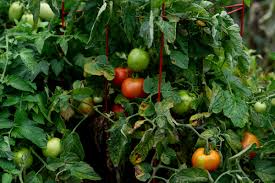Introduction
Companion planting is a technique that has been employed by gardeners for generations, offering a myriad of benefits. Specifically, companion planting with tomatoes enhances growth, improves yields, and deters pests. Selecting suitable companion plants is crucial to maximising the health and productivity of your tomato plants, whether you’re a seasoned gardener or a beginner.
Understanding Companion Planting
What is Companion Planting?
Companion planting involves strategically placing different plants in proximity to support each other’s growth. This method relies on principles such as polyculture, where plant diversity promotes healthier ecosystems and helps control pests.
Benefits of Companion Planting for Tomatoes
The benefits of companion planting with tomatoes are significant. Properly chosen companions can enhance growth and yield, create natural pest management solutions by attracting beneficial insects or repelling harmful ones. Additionally, these companion plants can improve soil health and foster biodiversity within your garden.
Ideal Companions for Tomatoes
Herbs that Thrive with Tomatoes
Herbs are excellent companions for tomatoes.
- Basil: Known for amplifying the flavour of tomatoes, basil also acts as a natural pest repellent.
- Parsley: This herb attracts beneficial insects such as hoverflies that prey on aphids.
- Oregano: As a ground cover, oregano prevents soil erosion and suppresses weeds while deterring pests.
Vegetables that Benefit Tomatoes
Several vegetables work harmoniously with tomatoes.
- Carrots: Their underground growth complements the root systems of tomatoes, preventing competition for resources.
- Onions: They release natural compounds that repel common pests like aphids and spider mites.
- Lettuce: When planted underneath tomato plants, lettuce enjoys the shade provided by their larger leaves, thriving in cooler conditions.
Flowers to Plant Near Tomatoes
Flowers can enhance the aesthetic appeal of your garden while offering complementary benefits.
- Marigolds: These vibrant flowers are known for their ability to deter nematodes and aphids.
- Nasturtiums: Acting as a trap crop, nasturtiums can lure aphids away from your tomato plants.
- Borage: This beautiful flower not only attracts pollinators but can also enhance the flavour of tomatoes when planted nearby.
Plants to Avoid with Tomatoes
Detrimental Companions
Certain plants can negatively impact tomato growth and health.
- Potatoes: Sharing common pests and diseases, planting potatoes near tomatoes can lead to increased vulnerability.
- Corn: Similar pest issues arise when corn is planted close to tomatoes, attracting unwelcome visitors.
- Fennel: Fennel can inhibit the growth of tomatoes due to its alleopathic properties, which can stunt nearby plant development.
Signs of Bad Companionship
Watch for symptoms of poor companionship, such as stunted growth, yellowing leaves, or increased pest activity. These signs indicate that your tomato plants may require a reassessment of their nearby companions.
Best Planting Practices for Tomato Companions
Planting Techniques
When arranging companion plants, consider their growth habits and space requirements. It’s beneficial to plant taller companions like corn at the edge of the bed to avoid shading your tomato plants.
Seasonal Considerations
Timing is key in companion planting. Planting companions that have similar growth cycles can help you make the most of your garden space throughout the season. For instance, sow lettuce alongside tomatoes early in the season for a delicious yield.
Conclusion
In summary, companion planting with tomatoes can significantly enhance your gardening experience. By understanding the principles of companion planting and choosing the right partners, you can create a thriving garden that benefits from natural pest control, improved yields, and aesthetic beauty. Experimenting with various plant combinations can lead to delightful discoveries in your own garden.


